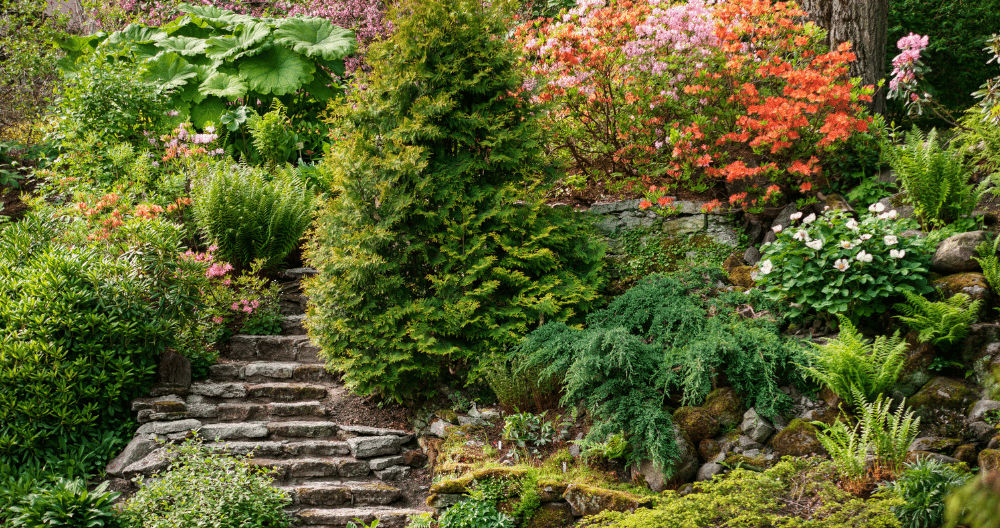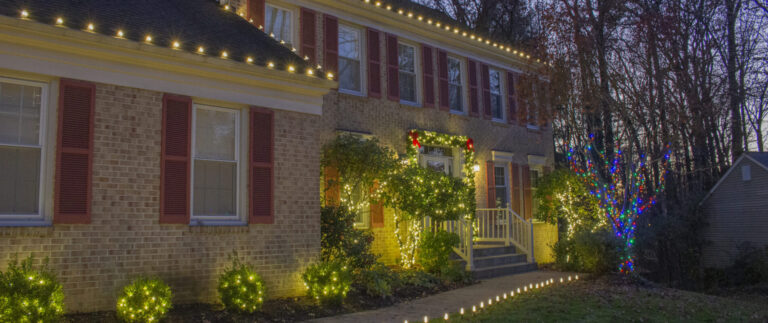

Over the years, there have been all kinds of buzz surrounding rain gardens. They certainly sound interesting, perhaps exotic even, but what exactly is a rain garden? Not to worry, we have all the info you could possibly need to learn all about what these gardens are all about and how they can benefit you and your community.
Rain gardens are a landscaped area that’s used to collect rainwater as it runs off of driveways, roofs, or even streets.
The garden part of a rain garden pertains to the planting of native flowering perennials, shrubs, and grasses that can help filter the runoff water, plus make the space an attractive feature of the landscape.
However, rain gardens are not to be confused with a pond or water garden! The rainwater that gets collected isn’t held, but instead is absorbed back into the earth. This process is dependent on how much it rains, but typically takes between 12 and 48 hours.

A rain garden’s functional purpose is to offer a place for this runoff water to collect, be filtered, and then absorbed back into the earth.
When stormwater runs down roofs, over streets, and across lawns, the water picks up many contaminants along the way, such as dirt particles, bacteria from pet waste, road salt, and pesticides or fertilizers—to name a few!
This water then ends up in storm drains and is directed into the nearest body of water. Unfortunately, this means that all those pollutants are now disturbing the biodiversity of natural habitats for fish and wildlife.
What is so cool about rain gardens is that they can soak up to 30% more rainwater than a lawn can, which reduces the volume of runoff and acts as a natural filter so that any harmful pollutants aren’t entering our waterways. The fact that they are also a beautiful feature is just an added bonus!

Step 1. Choose a Location
Ideally, this would be on the downside of an area on your property with a slight natural slope so that you can easily direct the water to your garden. A soil test should be done in order to determine whether or not the site is suitable.
Soil that’s heavy with clay doesn’t make the best site because the aeration will be poor, and clay tends to hold water. This would cause the area to become waterlogged for longer, and could potentially cause issues.
Rain gardens are only meant to hold water temporarily. An easy way to test your soil is to dig a hole 10-12 inches deep and fill it with water. If the water drains within 48 hours, you know it’s a suitable spot for your rain garden.
Step 2. Determine the Size
Rain gardens are typically 20% the size of the surface that’s draining the water into it. For example, if your roof is 1000 sq. ft., then your rain garden should be at least 200 sq. ft. to accommodate the runoff.
Step 3. Dig
Remove up to 12 inches of soil from the area and amend with sand, compost, and topsoil to increase water infiltration. A good recipe for a fast-draining mixture is approximately ½ sand to ¼ compost and ¼ topsoil.
If your rain garden isn’t in an area with a natural slope, there are a few ways to direct the flow of water to your garden. Place an extension on your rain spout; use a rain barrel and an overflow pipe; or dig a small trench lined with landscape fabric and river rocks to create your very own streambed. Don’t be afraid to get creative!
Step 4. Plant
The best kinds of plants to use in a rain garden are ones that don’t mind excessive moisture but can also tolerate periods of drought. Native plants are recommended as they will be better suited to survive and thrive in their natural environment.
In order to achieve an attractive look, it’s best to choose plants of varying heights, colors, and textures. Often rain gardens consist of shrubs, flowering perennials, and grasses. Read about some of our suggested plants below.
Astilbe plants are a flowering perennial and don’t mind getting their feet wet, though they prefer a bit of protection from the sun—a towering shrub would do the trick! The flowers bloom in summer and vary from pink, white, red, or purple.
New England Aster is a perennial that offers pretty daisy-like flowers in purple, blue, or pink. Butterflies love them, too!
Switchgrass can grow nice and tall, which is perfect for adding texture to your rain garden. The seed heads will also attract birds and provide winter interest.
Spike Rush is a grass that is used to getting its feet wet. It can grow up to 4 feet tall and features fluffy brown and white flower spikes.
Bee Balm is naturally found growing as bushes along streambeds, making it an ideal choice for a rain garden. It’s also known for attracting bees, hummingbirds, and butterflies.
Swamp Milkweed is often found—you guessed it—growing near swamps and marshes. It produces pink flowers that also attract butterflies and has a bushy growth pattern.
Red Osier Dogwood is a lovely shrub that is named for its dazzling red branches. It provides a pop of color even during the drab winter months.
Winterberry, also known as deciduous holly, is a shrub that produces bunches of bright red berries. This looks particularly striking in the fall and winter after the shrub loses all of its leaves and only the berries remain. However, in order for the berries to grow, you will need to plant a male and female plant within close proximity to each other so they can pollinate.

There are so many beneficial reasons to build your very own rain garden!
Now that you know exactly what a rain garden is, you might be wanting to construct your very own! Feel free to stop in at one of our locations, and we’ll help you get started.
At Greenstreet Gardens, we take pride in the fact that our number one goal is to make our customers successful.
Equipped with a diverse wealth of information and a knowledgeable staff, we are confident that we are able to provide all of the right tools and plant material necessary to help make your gardening ideas become reality.
Subscribe to our newsletter
© Greenstreet Gardens 2024 | All Rights Reserved.


In observance of the holiday, our stores will be closing early on Easter Sunday at 4pm. Wishing you a joy-filled day with loved ones!


We offer options for booking multiple groups for evenings as well as private reservations.
Fill out the form below to receive more information.
Booking dates are available Monday to Friday
from September 27th to October 25th.
Arrival times are between 9:30 am to 12:00 pm;
to reserve an evening, please email us today!
Come celebrate your special day with a magical party at our Fall Festival! Wind your way through the corn maze, conquer the corn pit, and top it all off with a hayride—it’s sure to be one to remember.
Parties can be booked on the hour on Saturdays & Sundays between
September 25thand October 31st and are subject to availability.

